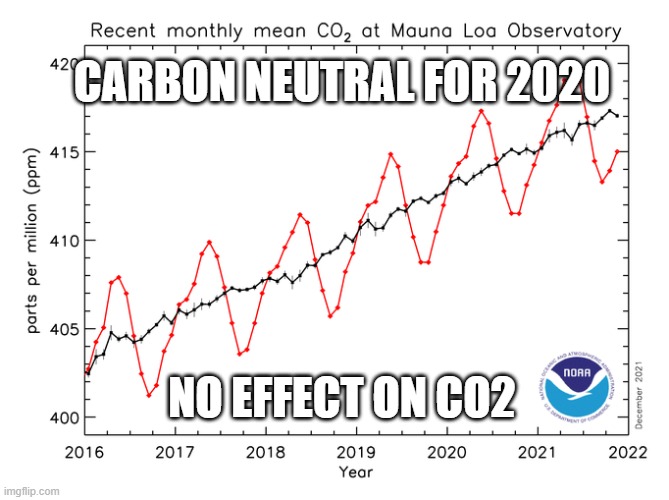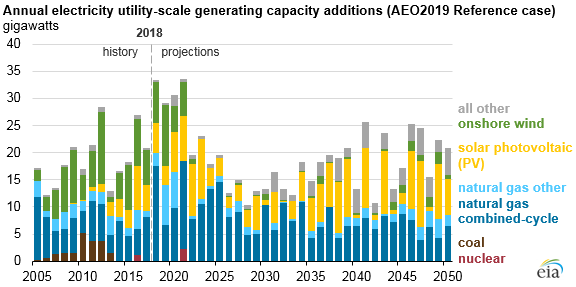On what do you base that opinion? I think PV, wind, tidal, hydro and geothermal are all equally good potential sources in emerging economies, can be localized and thus scaled to local needs and require no fueling infrastructure.Every clean energy source helps. However, the increasing need for energy by emerging economies can only be met by fossil fuels, far into the future.
Navigation
Install the app
How to install the app on iOS
Follow along with the video below to see how to install our site as a web app on your home screen.

Note: This feature currently requires accessing the site using the built-in Safari browser.
More options
You are using an out of date browser. It may not display this or other websites correctly.
You should upgrade or use an alternative browser.
You should upgrade or use an alternative browser.
The hockey stick revisited.
- Thread starter Old Rocks
- Start date
- Banned
- #42
A new paper addressing the hockey stick graph;
You have no idea what you cut and paste, do you Moon Bat?
The hockey stick graph was created with cherry picked data by shitheads that admitted they lied.
You have no credibility posting this silly Environmental Wacko shit.
You have no credibility responding with such unfounded nonsense. The hockeystick has been validated repeatedly. It was not made with cherry picked data and its creators (Mann, Bradley and Hughes) have never admitted to lying. So where do you come up with your bullshit claims?
Woodznutz
Platinum Member
- Dec 9, 2021
- 18,407
- 8,695
- 473
This report from 2019 sheds some light.On what do you base that opinion? I think PV, wind, tidal, hydro and geothermal are all equally good potential sources in emerging economies, can be localized and thus scaled to local needs and require no fueling infrastructure.

The Future of Fossil Fuels: New Discoveries, Technological Advancements, and Global Growth - FossilFuel.com
As energy consumption continues to rise, the Energy Information Administration expects that fossil fuels will remain as the primary source of global energy.
- May 20, 2009
- 145,492
- 68,236
- 2,330
The emissions associated with the energy consumption of both individuals and industry can be curtailed by a shift to alternate energy sources in our infrastructure.

Show us the CO2 drop off from the global shutdown in 2020
Sunsettommy
Diamond Member
- Mar 19, 2018
- 15,092
- 12,683
- 2,400
You have no credibility responding with such unfounded nonsense. The hockeystick has been validated repeatedly. It was not made with cherry picked data and its creators (Mann, Bradley and Hughes) have never admitted to lying. So where do you come up with your bullshit claims?
All those studies used the SAME math error that Dr. Mann used that is why they are all wrong.
I posted the hard evidence of his paper being shown to be statistical junk in POST 24 which YOU and Rockhead has ignored it is time for YOU to stop LYING about it.
"Reconstructions that have poor validation statistics (i.e., low CE) will have correspondingly wide uncertainty bounds, and so can be seen to be unreliable in an objective way. Moreover, a CE statistic close to zero or negative suggests that the reconstruction is no better than the mean, and so its skill for time averages shorter than the validation period will be low. Some recent results reported in Table 1S of Wahl and Ammann (in press) indicate that their reconstruction, which uses the same procedure and full set of proxies used by Mann et al. (1999), gives CE values ranging from 0.103 to -0.215, depending on how far back in time the reconstruction is carried. STR Preprint, 91"
bolding mine
A "report" from FossilFuel.com whose source do not include a single peer reviewed study and which projects that fossil fuels will remain in use for "some time to come" does NOT state, as you suggest, that they are superior energy sources for developing economies. To top it off, your author states"it will be imperative for the fossil fuel industry to craft new global agreements and plans to increase investments in technology to reduce greenhouse gas emissions in an effort to combat climate change. This report does NOT support your original claim.This report from 2019 sheds some light.

The Future of Fossil Fuels: New Discoveries, Technological Advancements, and Global Growth - FossilFuel.com
As energy consumption continues to rise, the Energy Information Administration expects that fossil fuels will remain as the primary source of global energy.fossilfuel.com

Show us the CO2 drop off from the global shutdown in 2020
The lifetime of CO2 in the Earth's atmosphere is 300 to 1,000 years. The month's long drop of as much as 17% of GHG emissions during the pandemic followed by an immediate rebound to previous rates was never expected to have any significant impact on atmospheric levels.
- May 20, 2009
- 145,492
- 68,236
- 2,330
View attachment 599191
The lifetime of CO2 in the Earth's atmosphere is 300 to 1,000 years. The month's long drop of as much as 17% of GHG emissions during the pandemic followed by an immediate rebound to previous rates was never expected to have any significant impact on atmospheric levels.
So you're saying human activity has absolutely no impact on CO2 readings.
Thank you
Woodznutz
Platinum Member
- Dec 9, 2021
- 18,407
- 8,695
- 473
No one can accurately predict the future regarding energy. However, if developing countries are going to advance at their present pace fossil fuels will continue to be the primary energy source for the foreseeable future.A "report" from FossilFuel.com whose source do not include a single peer reviewed study and which projects that fossil fuels will remain in use for "some time to come" does NOT state, as you suggest, that they are superior energy sources for developing economies. To top it off, your author states"it will be imperative for the fossil fuel industry to craft new global agreements and plans to increase investments in technology to reduce greenhouse gas emissions in an effort to combat climate change. This report does NOT support your original claim.
A "report" from FossilFuel.com whose source do not include a single peer reviewed study and which projects that fossil fuels will remain in use for "some time to come" does NOT state, as you suggest, that they are superior energy sources for developing economies. To top it off, your author states"it will be imperative for the fossil fuel industry to craft new global agreements and plans to increase investments in technology to reduce greenhouse gas emissions in an effort to combat climate change. This report does NOT support your original claim.
But dOy.......
Youre not a serious person
- May 20, 2009
- 145,492
- 68,236
- 2,330
View attachment 599191
The lifetime of CO2 in the Earth's atmosphere is 300 to 1,000 years. The month's long drop of as much as 17% of GHG emissions during the pandemic followed by an immediate rebound to previous rates was never expected to have any significant impact on atmospheric levels.
For starters, your Climate Doomsday CO2 only "started in 1850 or 170 years ago, so "The lifetime of CO2 in the Earth's atmosphere is 300 to 1,000 years (whichever comes first)" hysteria is irrelevant.
Forget that Spindeltop was only discovered in the 1900 and there was no significant fossil fuels burning until much later.
If mankind is a main contributor to CO2 there should have been a noticeable decline in 2020 - there wasn't!
People can accurately predict the future regarding energy though that accuracy falls off as the predictions lengthen. You have no supporting evidence for your claim regarding developing countries though I would accept that in certain situation, fossil fuel energy might be simpler or cheaper to implement. But this ignores that even the people running poor, developing nations seem to have a better grasp of science and logic than do you and understand that the use of fossil fuels is harmful to the planet, that fossil fuels are on their way out and that technologies that do not require fueling at all have fundamental and overwhelming advantages over those that do.No one can accurately predict the future regarding energy. However, if developing countries are going to advance at their present pace fossil fuels will continue to be the primary energy source for the foreseeable future.
The use of fossil fuels raised the standard of living. What is going on here is misuse of science to further certain commercial interests.the use of fossil fuels is harmful to the planet
Really? You think the push for alternative energy technology is being driven by people who will profit from its implementation? If so, do you have any evidence to support that idea? That might be evidence similar to that showing the oil industry having spent hundreds of millions of dollars to convince people like you that AGW is still the subject of widespread debate and that its mitigation (an existential threat to the fossil fuel industry) will cost more than we can afford.
Woodznutz
Platinum Member
- Dec 9, 2021
- 18,407
- 8,695
- 473
Time will tell if I'm right or wrong. Once built fossil fueled energy plants are going to be operating for a long time. The graph shows "projections" of energy produced by both natural gas and PV and wind. The difference is that ng energy production is certain while wind and PV aren't.People can accurately predict the future regarding energy though that accuracy falls off as the predictions lengthen. You have no supporting evidence for your claim regarding developing countries though I would accept that in certain situation, fossil fuel energy might be simpler or cheaper to implement. But this ignores that even the people running poor, developing nations seem to have a better grasp of science and logic than do you and understand that the use of fossil fuels is harmful to the planet, that fossil fuels are on their way out and that technologies that do not require fueling at all have fundamental and overwhelming advantages over those that do.
China and India continue to build coal plants, especially China. The U.S. is ramping up coal production to sell to China. These plants will deliver dependable energy which will be the foundation of their energy needs for decades to come.

Source: U.S. Energy Information Administration, Annual Energy Outlook 2019
EIA’s long-term projections show that most of the electricity generating capacity additions installed in the United States through 2050 will be natural gas combined-cycle and solar photovoltaic (PV). Onshore wind looks to be competitive in only a few regions before the legislated phase-out of the production tax credit (PTC), but it becomes competitive later in the projection period as demand increases and the cost for installing wind turbines continues to decline.
Last edited:
Time will tell if I'm right or wrong. Once built fossil fueled energy plants are going to be operating for a long time. The graph shows "projections" of energy produced by both natural gas and PV and wind. The difference is that ng energy production is certain while wind and PV aren't.
China and India continue to build coal plants, especially China. The U.S. is ramping up coal production to sell to China. These plants will deliver dependable energy which will be the foundation of their energy needs for decades to come.

Source: U.S. Energy Information Administration, Annual Energy Outlook 2019
EIA’s long-term projections show that most of the electricity generating capacity additions installed in the United States through 2050 will be natural gas combined-cycle and solar photovoltaic (PV). Onshore wind looks to be competitive in only a few regions before the legislated phase-out of the production tax credit (PTC), but it becomes competitive later in the projection period as demand increases and the cost for installing wind turbines continues to decline.
Correct
The climate crusaders in here....to a person....don't acknowledge the existence of Chinese coal.
It torpedos every argument they make. That's why most consider them unicorn chasers.
Fossil fuel powered plants are being shut down. And as durable as they might be, they will only run as long as people feed them fuel.Time will tell if I'm right or wrong. Once built fossil fueled energy plants are going to be operating for a long time. The graph shows "projections" of energy produced by both natural gas and PV and wind. The difference is that ng energy production is certain while wind and PV aren't.
China and India continue to build coal plants, especially China. The U.S. is ramping up coal production to sell to China. These plants will deliver dependable energy which will be the foundation of their energy needs for decades to come.

Source: U.S. Energy Information Administration, Annual Energy Outlook 2019
EIA’s long-term projections show that most of the electricity generating capacity additions installed in the United States through 2050 will be natural gas combined-cycle and solar photovoltaic (PV). Onshore wind looks to be competitive in only a few regions before the legislated phase-out of the production tax credit (PTC), but it becomes competitive later in the projection period as demand increases and the cost for installing wind turbines continues to decline.
The US is not ramping up coal production - the industry is dying rapidly - even when Trump was president.
Your graph shows an increase in PV and a decrease in natural gas and coal. Care to explain?
Woodznutz
Platinum Member
- Dec 9, 2021
- 18,407
- 8,695
- 473
The US is not ramping up coal production - the industry is dying rapidly - even when Trump was president.
U.S. coal production up 15% | The Coal Hub
Similar threads
- Replies
- 269
- Views
- 4K
- Replies
- 27
- Views
- 243
- Locked
- Replies
- 7
- Views
- 396
Latest Discussions
- Replies
- 9
- Views
- 51
- Replies
- 2
- Views
- 24
- Replies
- 460
- Views
- 13K
- Replies
- 109
- Views
- 492
Forum List
-
-
-
-
-
Political Satire 8244
-
-
-
-
-
-
-
-
-
-
-
-
-
-
-
-
-
-
-
ObamaCare 781
-
-
-
-
-
-
-
-
-
-
-
Member Usernotes 476
-
-
-
-
-
-
-
-
-
-
